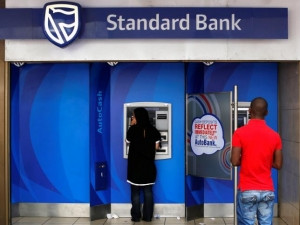
As mobile devices and technology become more sophisticated, Standard Bank has set its sights on becoming a modern bank offering services accessible via any device.
Speaking at a media briefing yesterday, Standard Bank's chief executive for personal and business banking, Peter Schlebusch, said: "Digital represents the biggest threat but also represents the biggest opportunity for the bank."
As part of Standard Bank's digital transformation, it is upgrading its entire core banking system in an effort to meet the continually changing behaviour of customers.
Schlebusch said Standard Bank will continue to leverage off increased smartphone penetration. "We find that working in new agile ways, we get things delivered to market much quicker. This is a new way of working for Standard Bank that we are embracing and we'll do it more and more.
"What we are trying to do is put the customer at the centre and work out what the customer wants and give them complete control of their financial services irrespective of which device they are using," he added.
Disruptive mode
According to Standard Bank, 95% of its transactions are already electronic and branch transactional volumes have declined, and ATM and branch transactions now make up less than 5% of total banking transactions.
Schlebusch said the bank's mobile traffic has grown 100% a year as customers embrace more convenient and efficient solutions for their banking needs.
"Our aim is to be always on and always connected, while providing biometric authentication and extensive use of data analytics to personalise the customer experience to a far larger degree," he said.

To continue on its transformation journey at the end of the third quarter, the bank will also offer digital services such as real-time payments across all banks which will be available via the bank's app, auto-share invest, virtual credit cards where the mobile phone is the payment engine, and a merchant customer portal.
Meanwhile, Standard Bank is introducing the Kidz Banking App, which is a game-like, animated banking app designed for children aged six to 11.
The app was developed with youth education and the improvement of the culture of saving in mind. It will be linked to a parent's Standard Bank smartphone app, and features characters themed on SA's big five that assist parents in guiding children on money management concepts such as earning, saving and responsible spending.
"We are committed to Africa and proudly call the continent our home. Africa loves mobile. This is why we are so excited about how technology and data is allowing us to get even closer to our customers," noted Schlebusch.
Digital journey
SA may be a little behind other countries in terms of digital transformation, but the country's financial and banking sector has been aggressively driving the adoption of digital services.
George Kalebaila, IDC senior research manager for telecoms and media in Sub-Saharan Africa, says in terms of digital transformation in the banking industry, the push usually comes from consumers.
"Standard Bank has a large African footprint. African consumers are very mobile-conscious, which means the mobile device will be the driving force of the digital transformation in the banking space," Kalebaila says.
The future of digital transformation within the banking sector has an impact on the operating models of the bank, he states.
Ovum senior analyst Richard Hurst says all enterprises, particularly those in the services space, will be looking at digital platforms and how these will form part of their overall strategy going forward.
"It's good news to see that the company [Standard Bank] is looking to up the ante and begin rolling out services to compete with other entities both within the financial services and elsewhere. The adoption of a digital strategy will certainly serve to give the enterprise an edge in being able to deliver services to their customers."
Leading example
While it may seem Standard Bank is playing catch-up to its banking competitors in the local market, Kalebaila says that is not the case. "All four of the country's big banks have digital platforms that they are driving and offer to customers."
According to Kalebaila, because First National Bank has been the loudest in terms of digital and value-add services to customers, this results in it being seen as the front-runner in the banks' digital revolution race. "Standard Bank has also been very innovative in the background."
Hurst explains: "Banks and financial services have adopted different approaches to their digital strategy. In some instances as we have seen, entities have opted to gain a 'first mover' advantage by providing services that the other financial services providers do not have. Others have opted for a slow or watered-down approach.
"In truth, there is nothing fundamentally wrong with either approach; the entity that opts to adopt digital strategies later in the game may also be at an advantage in being able to apply the lessons learnt from the first mover."
Share